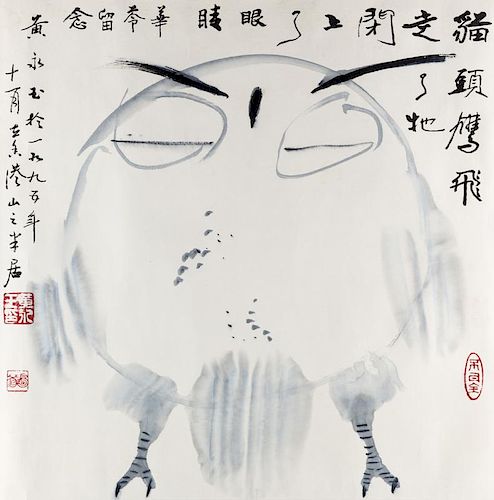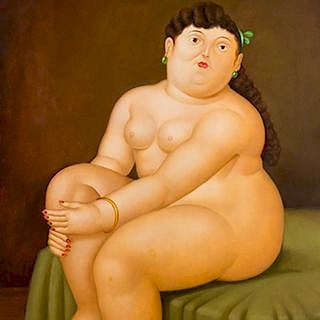HUANG YONGYU (CHINESE B. 1924)
About Seller
566 East Boston Post Road
Mamaroneck, NY 10543
United States
Our auctions feature an impressive selection of fine art, decorative art, rare books, icons, militaria, and other objects from antiquity to the present. Shapiro Auctions advertises globally and has clients all over the world, while providing a rare combination of personal service and the ability to ...Read more
Two ways to bid:
- Leave a max absentee bid and the platform will bid on your behalf up to your maximum bid during the live auction.
- Bid live during the auction and your bids will be submitted real-time to the auctioneer.
Bid Increments
| Price | Bid Increment |
|---|---|
| $0 | $25 |
| $500 | $50 |
| $1,000 | $100 |
| $2,000 | $250 |
| $5,000 | $500 |
| $10,000 | $1,000 |
| $20,000 | $2,500 |
| $50,000 | $5,000 |
| $100,000 | $10,000 |
| $200,000 | $25,000 |
About Auction
Sep 17, 2016 - Sep 18, 2016
Shapiro Auctions info@shapiroauctions.com
- Lot Description
HUANG YONGYU (CHINESE B. 1924)
Owl, Flying Away, Closed Its Eyes, 1995
ink and watercolor on paper
68 x 68 cm (26 3/4 x 26 3/4 in.)
signed and dated upper center left, bearing a dedicatory inscription upper left, titled upper center right and upper center
PROVENANCE
Gifted by the artist to the mother of the present owner
LOT NOTES
During the 1970s, Huang Yongyu began to move away from his previously established medium of woodcut printing into ink paintings of flowers, landscapes and birds. These same subjects were promoted by the Premier of the People`s Republic of China, Zhou Enlai, as appropriate for the visual consumption by foreigners visiting the country, and so were used by members of the Hotel School to decorate establishments patronized by international visitors. Meant to be beautiful and innocuous, the works were in direct contrast to the language used in art meant for the general Chinese population, focusing on inherently political Socialist Realist themes. It might be seen as surprising then, that Yongyu`s 1973 Hotel School painting of a winking owl caused the uproar that it did.
The owl, as well as Yongyu`s now iconic paintings of the bird, have a complex cultural significance in China. Unlike the long-held view of the owl as a figure of wisdom in the West, traditionally in China, the image of the owl was filled with ominous connotations and seen as a harbinger of ill news. A popular Chinese saying keeping one eye open and the other closed implies that one is deliberately pretending not to see and ignoring wrongdoing, with some applying this interpretation to the facial expression of the winking owl, thereby giving the painting a controversial politicized reading as critical of the Cultural Revolution. None the less, the artist has always maintained that the expression is a mere example of a natural phenomenon, and is something commonly seen in owls.
At the same time, however, since the 1950s there was a concerted official effort to improve the cultural image of the owl. The late `50s were a period of widespread famine in China, with many blaming sparrows and rodents for the destruction of already faltering crops. The owl was promoted as a natural enemy to these creatures and as such, an aid to people. Publications for children and young adults featuring the owl as a lovable protagonist, and even a film, were created to promote the raptor`s image, and did so successfully. Yongyu himself was an illustrator of children`s books and likely was familiar with the new “official” stance on the bird. This benevolent view of the creature, and the artist`s subsequent paintings of owls, such as the present lot, seems to be supported by numerous other public figures including American poet Paul Engle, the husband of the person to whom this painting was dedicated and gifted, and who knew Yongyu. Engle even used one of his later images of the owl to illustrate one of his works, Owl Replies, a poem about the bird published in Images of China, 1981, which could be seen as a direct reference to the work: One eye open, one eye closed / Both eyes closed, both eyes open / I`m still a better bird than you... inviting the viewer to become a wise owl with furious feathers / Sitting one eye open, one eye closed....Dimension
Height: 25000.00Width: 25000.00Depth: 25000.00Depth: 25000.00Weight: 25000.00Condition
fulltext
- Shipping Info
-
- Buyer's Premium



 EUR
EUR CAD
CAD AUD
AUD GBP
GBP MXN
MXN HKD
HKD CNY
CNY MYR
MYR SEK
SEK SGD
SGD CHF
CHF THB
THB











